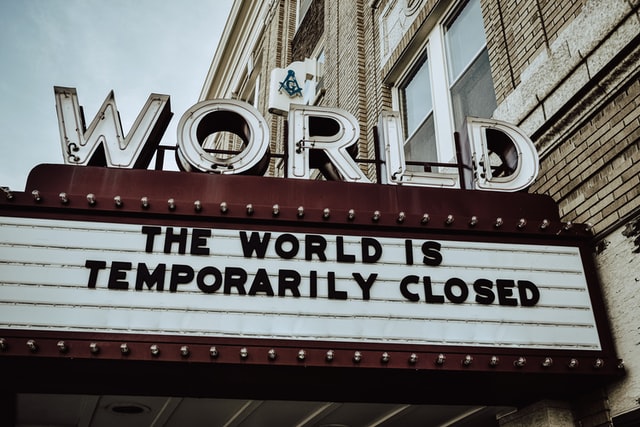The repercussions of the ongoing coronavirus pandemic are far-reaching. The retail industry, for one, will have its work cut out while trying to get back on its feet. One way to tide through is to cut retail costs and keep going for as long as possible.
Why retailers should think of cutting costs
Even before the pandemic hit, many small businesses had already been struggling with reduced cash flow. At this point, there is no clarity on how long the pandemic or the associated lockdown will last. Several states have been extending their lockdown periods indefinitely.
Even when lockdown restrictions are lifted, we’re looking at a changing world where people think twice before stepping out of their homes. Plus, over 22 million Americans have already lost their jobs and more are set to follow suit, indicating that a recession is already underway.
As a retailer, know that this is a marathon and not a sprint. You need to conserve cash to remain in business, even at its very basic version, for long enough to start selling again.
Areas Where You Can Cut Retail Costs


-
Conserving your working capital
Considering the fact that this is a tough time for everyone, you are actually in a great place to negotiate.
Talk to your suppliers about deferring payments on unsold stock. Many suppliers today are willing to cut penalties for late payments or write off the interest clause.
Another approach you can try is to negotiate with your business customers and request an advance payment for a benefit later. This works better if the businesses you sell to have cash on hand themselves.
Lastly, do not offer products on heavy discounts. That sounds wrong, but you need cash, and offering discounts won’t help you. Offer discounts only if the products are perishable in nature.
-
Cutting fixed costs
As a small business, you might already have the advantage of running a lean team and thus having lower fixed costs.
However, if you do need to let people go, offer them benefits at least for a few months. Retain only as much staff as you need to run at current levels- including operating dark stores if you wish.
If you had plans of opening more outlets, shelve that plan and divert that money into your daily operations. Bear in mind that you need enough runway until June 2021, if estimates are to be believed.
-
Your capital expenditure
Cancel all capital expenditure. The only exception to this rule is if you expect to recover these costs within six months even with lockdown restrictions in place.
Five ways to cut retail costs in the face of COVID19


-
Roll out a contingency plan
A contingency plan may vary based on the nature of your business. For instance, a grocery store selling essential supplies during the pandemic will do better than a luxury watch store. Each will have a different approach.
An essential goods store will have to ensure the safety of its employees, up its sanitation protocol, and restock as efficiently as possible. Try and source locally now because global supply chains are fragmented.
Local sourcing can also give you cost benefits during these times.
Divert funds to your online shopping channels. If you don’t already have the backend needed to accept and deliver online orders, consider a software product like Primaseller.
-
Review and redefine what is ‘essential’
The ‘want’ retailers, on the other hand, need a vastly different strategy. Some clues lie in what other brands are doing in this category- manufacturing and selling masks and sanitizer.
One way to tide through is to move from the ‘want’ category to the ‘need’ category. Another method is to consider what you’re already good at and make the most of that.
For example, if you are known in the neighborhood for timely responses, consider helping deliver essential goods and services instead of selling something.
Retailers can tap into consumer data to predict high-demand items or SKUs, and step up on making those available. SKUs that are less in demand can be placed on the back burner to save funds and divert them where the payoff is bigger.
As a stop-gap arrangement, you can freeze planned deliveries of non-essential products. You can also halt the production cycles of items sufficiently in stock.
-
Migrate promotional activities online
Fashion and apparel retailers have struggled through this period the most, often unsure of how to market themselves during this time.
Spend that marketing money well- people simply do not have the time or the mental bandwidth to listen to promotions anymore.
Instead, offer whatever value you can- keep their children engaged, support the elderly community, prevent isolation. Offer the support that your brand can.
Tailor your messages to show awareness and empathy for the altered circumstances. Reaching out to customers through social media is inexpensive and keeps brands connected to customers and their concerns.
-
Accelerate online order fulfillment
Since in many lockdown areas people have taken to shopping online for even essential goods, retailers can optimize their delivery models.
New partnerships can emerge during turbulent times like these, resulting in cost-cutting advantages for both businesses.
Consider investing in a neighborhood online store model and get a bunch of small businesses in the area together to fulfill orders online and cut costs.
This way, you can fulfill more orders on any given day, thus resulting in fewer order fulfillment costs.
-
Tap into whatever help is available
Keep an eye out for any bailout and revival funds that may become available from various sources: government, the technology sector, or community-sourced.
These may help cover overhead costs, rents, staff salaries till you get back on your feet.
Several people are currently looking to their neighborhood small business owners for things as basic as food, medicines, and everyday essentials. Fulfill that role as diligently as possible.


For all the predictions about the retail apocalypse, this is one scenario no one saw coming. The lessons learned on an individual, local, and global level during this pandemic will be invaluable.
But to get there, you need to cut retail costs first.
If you weather this storm successfully, you’d be prepared for absolutely anything the future throws at you.
When retailers do what they can to ensure supplies and service despite all odds, it creates a deeper appreciation in the mind of the consumer.
Suggested Reading: Surviving The Coronavirus Impact On Retail
Request Demo
thank you
thank you
thank you
Request Demo
window.IS_INDIA = 0;window.USER_COUNTRY = 'China';window.USER_CITY = 'Hangzhou';window.USER_COUNTRY_ISO = 'CN';
Armed with a degree and a pen, loves to tell stories. When not telling stories, she also works. Hard to decide which one she likes more.
(function(d){var s=d.createElement('script');s.type='text/javascript';s.src='https://a.omappapi.com/app/js/api.min.js';s.async=true;s.dataset.campaign='cxecxy09nlvnnyvfiqjf';s.dataset.user='22867';d.getElementsByTagName('head')[0].appendChild(s);})(document);
,



